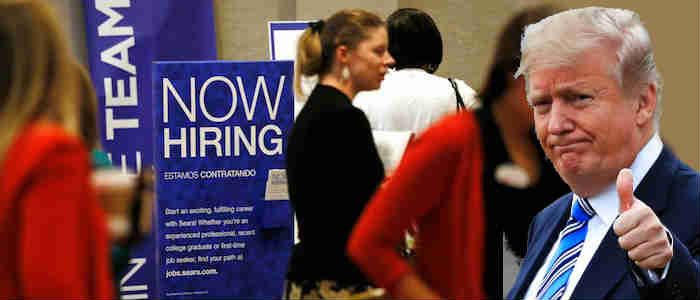By Dan Calabrese ——Bio and Archives--July 6, 2018
American Politics, News | CFP Comments | Reader Friendly | Subscribe | Email Us
 You’ve probably never heard someone tell you it was a good thing that the unemployment rate rose. I’m going to tell you that.
With 213,000 new jobs created in June – well above the replacement rate needed to keep up with population growth – the U3 unemployment rate actually rose to 4.0 percent. How can that be? And why would I say it’s good?
You’ve probably never heard someone tell you it was a good thing that the unemployment rate rose. I’m going to tell you that.
With 213,000 new jobs created in June – well above the replacement rate needed to keep up with population growth – the U3 unemployment rate actually rose to 4.0 percent. How can that be? And why would I say it’s good?Total nonfarm payroll employment increased by 213,000 in June, and the unemployment rate rose to 4.0 percent, the U.S. Bureau of Labor Statistics reported today. Job growth occurred in professional and business services, manufacturing, and health care, while retail trade lost jobs. Household Survey Data The unemployment rate rose by 0.2 percentage point to 4.0 percent in June, and the number of unemployed persons increased by 499,000 to 6.6 million. A year earlier, the jobless rate was 4.3 percent, and the number of unemployed persons was 7.0 million. (See table A-1.) Among the major worker groups, the unemployment rates for adult men (3.7 percent), adult women (3.7 percent), and Asians (3.2 percent) increased in June. The jobless rate for teenagers (12.6 percent), Whites (3.5 percent), Blacks (6.5 percent), and Hispanics (4.6 percent) showed little or no change over the month. (See tables A-1, A-2, and A-3.) Among the unemployed, the number of job losers and persons who completed temporary jobs increased by 211,000 in June to 3.1 million, and the number of reentrants to the labor force rose by 204,000 to 2.1 million. (Reentrants are persons who previously worked but were not in the labor force prior to beginning their job search.) (See table A-11.)
The number of long-term unemployed (those jobless for 27 weeks or more) increased by 289,000 in June to 1.5 million. These individuals accounted for 23.0 percent of the unemployed. (See table A-12.) In June, the civilian labor force grew by 601,000. The labor force participation rate edged up by 0.2 percentage point over the month to 62.9 percent but has shown no clear trend thus far this year. (See table A-1.) The employment-population ratio, at 60.4 percent, was unchanged in June and has essentially been flat since February. (See table A-1.) The number of persons employed part time for economic reasons (sometimes referred to as involuntary part-time workers) was little changed in June at 4.7 million. These individuals, who would have preferred full-time employment, were working part time because their hours had been reduced or they were unable to find full-time jobs. (See table A-8.) In June, 1.4 million persons were marginally attached to the labor force, little different from a year earlier. (Data are not seasonally adjusted.) These individuals were not in the labor force, wanted and were available for work, and had looked for a job sometime in the prior 12 months. They were not counted as unemployed because they had not searched for work in the 4 weeks preceding the survey. (See table A-16.)
Support Canada Free Press

View Comments
Dan Calabrese’s column is distributed by HermanCain.com, which can be found at HermanCain
Follow all of Dan’s work, including his series of Christian spiritual warfare novels, by liking his page on Facebook.